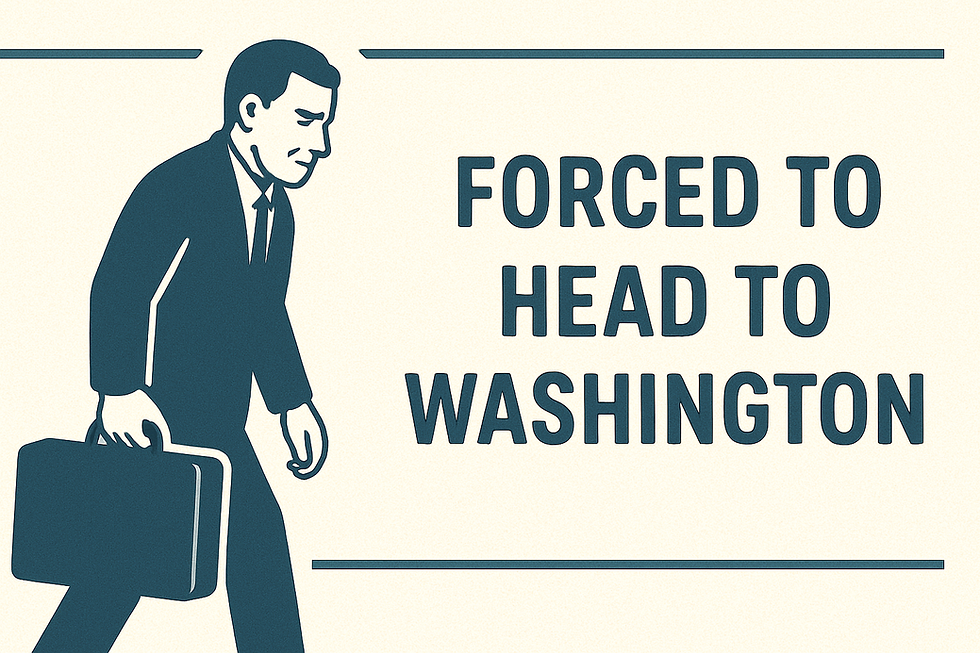Pants Down, the EU and NATO Leadership Is Forced to Head to Washington Monday—All Because They Have Been Jacking Off Since 2014
- Aug 17
- 3 min read

Europe’s leaders are flying to Washington on Monday, 18 August 2025, not as moral arbiters but as flank guards for Kyiv—because a decade of triangulation after 2014 forfeited their authority. They tolerated energy entanglement deep into the war, treated Minsk as strategy instead of a stopgap, and repeatedly entertained “freeze” talk that normalized Russian gains.
Now, with President Trump fresh off an Alaska summit that yielded no ceasefire and public hints of territorial concessions dressed up as “peace,” the only defensible role left to Europe is to stand visibly at Zelenskyy’s side and refuse a carve-up. Anything less hands Trump and Putin the moral inversion the two are obviously seeking.
The choreography is unambiguous: Zelenskyy’s White House meeting will be joined by European heads of government and institutions—London, Paris, Berlin, Rome, Helsinki—plus the NATO Secretary General and the European Commission President. The purpose is to prevent a bilateral squeeze and to keep the allied position physically in the room.
Multiple outlets and advisories confirmed the Washington lineup on Sunday; the vector from Alaska to the Oval Office is straight.
Europe’s moral deficit is well documented. The EU never recognized the seizure of Crimea on paper, but it allowed the practical mask to slip: Nord Stream 2 advanced until Germany finally froze certification on 22 February 2022; Russian gas—including LNG—continued to reach Europe through 2024, forcing Brussels in 2025 to tighten measures on trans-shipments and the “shadow fleet.”
These steps, welcome but late, underscore the point: policy said “non-recognition,” practice hedged until catastrophe.
After Alaska, Trump’s message was naked: Ukraine has to make a deal; Putin wants more Ukrainian land; the “deal” is a territorial concession framed as statesmanship.
That is moral inversion by design—cast the victim as the barrier to “peace,” then sell a freeze as wisdom.
Monday exposed the counter: surround Zelenskyy with the core of Europe and NATO so that any “peace” without restoration and enforcement looks like what it is—appeasement under duress.
But visibility is not leadership. Leadership would say, without euphemism: no recognition of territorial changes by force (Crimea included), no sanctions relief without verifiable withdrawal benchmarks, and no security guarantees that are not backed by hard power, money on rails, and enforcement authorities that bite.
The record since 2014 explains how we arrived here. The Minsk framework—brokered by Paris and Berlin—froze lines, laundered time, and taught the Kremlin that “agreements” are staging grounds, not endpoints. European debate periodically drifted toward off-ramps and “freezes,” encouraging the very ambiguity Putin weaponizes. Today’s scramble to Washington is the bill come due.
The implications? Words will not suffice on Monday.
Four concrete moves can change the game immediately:
First, codify the line. Every readout—European, NATO—must state that no settlement recognizes territorial change by force and that Crimea is not a bargaining chip. This is not “new” policy; it is overdue enforcement of what the EU said in 2014 and has reiterated since.
Second, move steel on a calendar. Lock multi-year European contracts that deliver artillery shells, air-defense interceptors, and long-range missiles on weekly schedules; publish the cadence and hit it. Europe’s defense industrial surge proves capacity exists when policy wills it. Put it to work for Ukraine now.
Third, enforce the sea lane. Finish the job on Russian hydrocarbons: operationalize port bans, service denials, and seizures against the shadow fleet with joint EU-U.K. enforcement cells; criminally prosecute evasion. The EU’s new measures against LNG trans-shipments and oil-fleet circumvention are the floor, not the ceiling.
Fourth, put skin in the game. European training, air defense crews, and other on-the-ground enablers inside Ukraine should no longer be taboo. Paris kicked open this door in 2024; analysts have since laid out realistic mission designs in western Ukraine. If Europe wants to block moral inversion, it must signal readiness to bear risk, not outsource it to Ukrainians alone.
Here is the bottom line...
Leadership has de facto moved to Kyiv because Europe refused to lead when it was cheaper.
On Monday, Europe can either keep posing for the camera or finally pay the price of credibility: arms that arrive on schedule, sanctions that bite at sea, money that clears, and—if needed—Europeans standing with Ukrainians on Ukrainian soil.
Otherwise the inversion proceeds, and the continent will learn again—expensively—what it chose to forget after 2014.






Comments